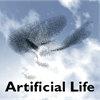作为自动编码器的神经元
IF 1.5
4区 计算机科学
Q4 COMPUTER SCIENCE, ARTIFICIAL INTELLIGENCE
引用次数: 0
摘要
这封信提出了神经反向传播利用树突处理使单个神经元进行自动编码的观点。通过使用非常简单的连接权重搜索启发式和人工神经网络模型,探讨了前馈网络隐藏层中每个神经元交错自动编码的效果。这与自动编码的等效标准分层方法进行了对比。结果表明,这种个性化处理并不有害,而且可以改善网络学习。本文章由计算机程序翻译,如有差异,请以英文原文为准。
Neurons as Autoencoders
This letter presents the idea that neural backpropagation is exploiting dendritic processing to enable individual neurons to perform autoencoding. Using a very simple connection weight search heuristic and artificial neural network model, the effects of interleaving autoencoding for each neuron in a hidden layer of a feedforward network are explored. This is contrasted with the equivalent standard layered approach to autoencoding. It is shown that such individualized processing is not detrimental and can improve network learning.
求助全文
通过发布文献求助,成功后即可免费获取论文全文。
去求助
来源期刊

Artificial Life
工程技术-计算机:理论方法
CiteScore
4.70
自引率
7.70%
发文量
38
审稿时长
>12 weeks
期刊介绍:
Artificial Life, launched in the fall of 1993, has become the unifying forum for the exchange of scientific information on the study of artificial systems that exhibit the behavioral characteristics of natural living systems, through the synthesis or simulation using computational (software), robotic (hardware), and/or physicochemical (wetware) means. Each issue features cutting-edge research on artificial life that advances the state-of-the-art of our knowledge about various aspects of living systems such as:
Artificial chemistry and the origins of life
Self-assembly, growth, and development
Self-replication and self-repair
Systems and synthetic biology
Perception, cognition, and behavior
Embodiment and enactivism
Collective behaviors of swarms
Evolutionary and ecological dynamics
Open-endedness and creativity
Social organization and cultural evolution
Societal and technological implications
Philosophy and aesthetics
Applications to biology, medicine, business, education, or entertainment.
 求助内容:
求助内容: 应助结果提醒方式:
应助结果提醒方式:


